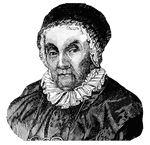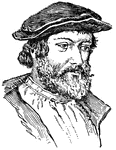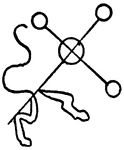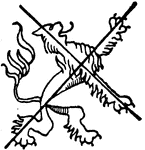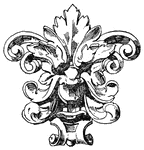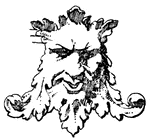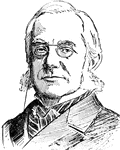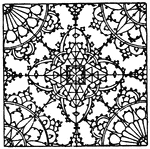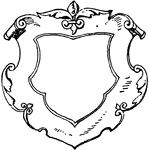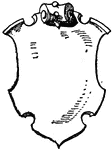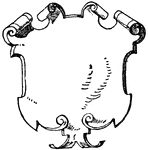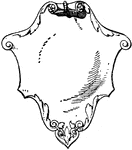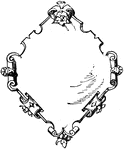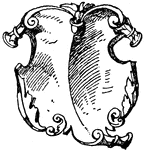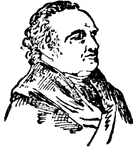
Sir William (Frederick) Herschel
(1738-1822) German astronomer who discovered the planet Uranus in 1781 and was appointed astronomer…
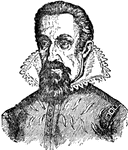
Johannes Kepler
Johannes Kepler (1571-1630) was a German mathematician, astronomer, and astrologer. A key figure in…
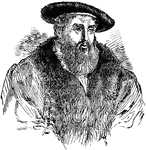
Johannes Kepler
Johannes Kepler (December 27, 1571 - November 15, 1630) was a German mathematician, astronomer and astrologer,…

Renaissance Lunette Panel
The Renaissance lunette panel is a German design made out of wrought-iron.
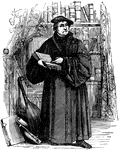
Martin Luther
Martin Luther (November 10, 1483 - February 18, 1546) was a German monk, theologian, university professor,…

German Mask
Grottesque mask, German Resascence, pedestal of a column, tomb in Pforzheim. By Hans von Trarbach.

German Mirror-Frame
The German mirror frame was made in the 18th century. A mirror surrounded by scroll work.
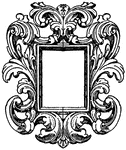
German Mirror-Frame
The German mirror frame was made in the 18th century. A mirror surrounded by scroll work.
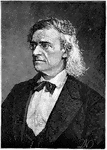
Theodor Mommsen
Christian Matthias Theodor Mommsen (30 November 1817 – 1 November 1903) was a German classical scholar,…

German Pattern
The German pattern is a 17th century design. It is a net design filled with recurring ornamental accessories.

Christ Appearing to St. Magdalene
Christ Appearing to St. Magdalene is a woodcut that is part of a series called "Little Passion" by German…
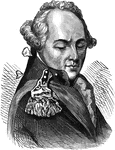
Frederick Adolph Riedesel
Riedesel was the commander of a regiment of soldiers from the Duchy of Brunswick (Braunschweig) among…

Wilhelm Röntgen
(1845-1923) German scientist she produced and detected electromagnetic radiation in a wavelength range…
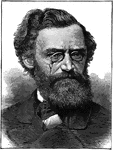
Carl Schurz
Carl Schurz (March 2, 1829 – May 14, 1906) was a German revolutionary, American statesman and…

The Electors' Seat
"This structure stands on the banks of the Rhine near Coblenz. On the top are stone seats where the…

The Man of Sorrows
The Man of Sorrows is a woodcut by German artist Albrecht Dürer. It is part of a series called…

Renaissance Square Panel
The Renaissance square panel is a modern German design that is done in intarsia (wood inlaying).
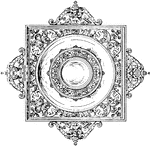
Renaissance Strap-Work Border And Margin
This Renaissance strap-work border and margin is of German origin, it was used as an additional exterior…
Renaissance Strap-Work Frame
This Renaissance strap-work frame was made between 1576-1577 in Germany.

Renaissance Strap-Work Frame
This Renaissance strap-work frame was made between 1576-1577 in Germany. Made out of bronze tablets,…

Renaissance Strap-Work Frame
This Renaissance strap-work frame was made between 1576-1577 in Germany. Made out of bronze tablets,…
Renaissance Strap-Work Frame
This Renaissance strap-work frame was made between 1576-1577 in Germany.

Wrought-Iron Escutcheon Strap-Work Tablet
The wrought-iron escutcheon tablet was of German origin of the 16th century.
Tassel
This tassel was designed by German artist Holbein. It consists of a tuft of threads or cords hanging…
Tassel
This tassel was designed by German artist Holbein. It consists of a tuft of threads or cords hanging…
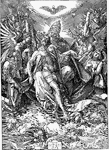
The Holy Trinity
The Holy Trinity is a woodcut that was created by German artist Albrecht Dürer in 1511. This woodcut…

German Typographical Frame
This German Typographical frame is a tablet from the triumphal entry of the Emperor Maximilian. It was…

German Urn
The German urn is a 16th century design made out of cut crystal. It is a small vase with a high foot…
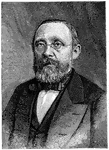
Rudolf Virchow
Rudolf Ludwig Karl Virchow (13 October 1821 – 5 September 1902) was a German doctor, anthropologist,…

Helmuth Karl Bernhard Graf von Moltke
Helmuth Karl Bernhard Graf von Moltke (October 26, 1800 - April 24, 1891) was a German Generalfeldmarschall.…
